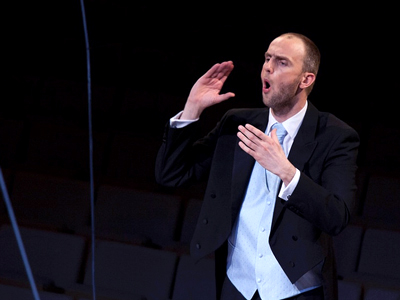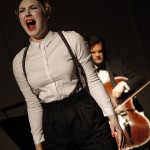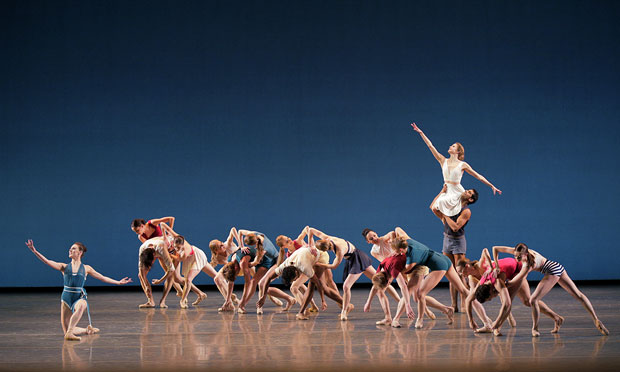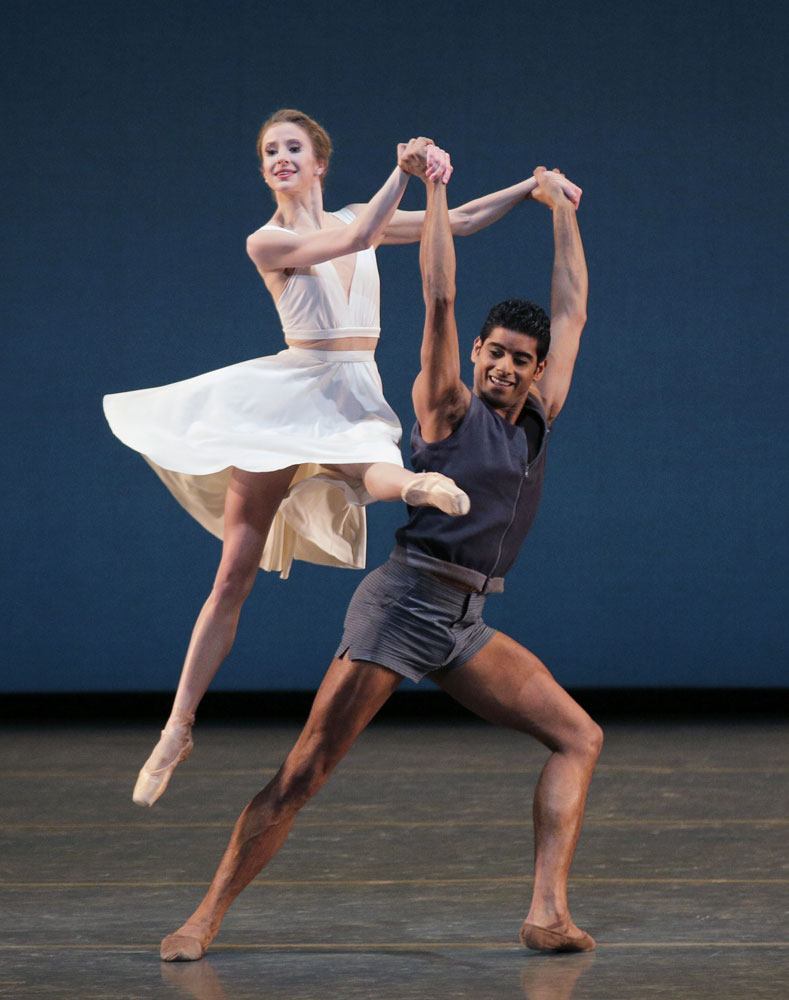Note: This review marks the continuation of a series dedicated to showcasing the best student writing from the Dance History course I teach at The Juilliard School.
By Kyle Weiler
The Joyce Theatre program Working Women (Jan 30-Feb 3) offered an eclectic sampler of works by eight female choreographers. Like a four-course meal, the evening tendered various flavors of dance. The winning course turned out to be Camille A. Brown’s self-choreographed solo The Real Cool. Performed after intermission, this piece brilliantly combined the bitter, the sour, and the sweet.
As the curtain rose, Brown hovered downstage under a round spotlight like a damaged puppet in a gray suit and white gloves. Her costume and makeup channeled late 19th century caricatures of black performers. According to Ken Padgett’s The History of Blackface, black minstrel performers had to present themselves in accordance with degrading stock characters, such as “Pickaninny” or the “Zip Coon.”
Brown began her solo with a series of sharp, powerful arm movements accompanied by rhythmic exhales. A larger than life silhouette of her body engulfed the cyclorama, thanks to lighting designer Burke Wilmore. Brown’s anxiety driven movement appeared to be trapped within a single pool of light. Alluding to suffocating pressures, her upper body pulsated. She executed knee spins in a circle around the space; her forceful, flexed-footed high kicks and the rapid repetition of jumping over her own leg, as if revolving like helicopter propeller, demonstrated her fight. Unlike some of the other performances in the program, nothing about Brown’s choreography was arbitrary. The movement Brown chose carefully communicated the harrowing and poignant experience of the black minstrel performer forced to embody racist stereotypes.
Fighting back tears, Brown’s portrayal of a belittled figure was utterly convincing. She literally put on a happy face in a desperate act to entertain the crowd. At one moment, Brown flashed an overly sweet smile, which quickly disintegrated into a bitter, painful sob. A piano arrangement of “What a Wonderful World” provided a striking paradox to Brown’s broken character that struggles body and soul to maintain composure. (Ironically this tune by Bob Theile/George D. Weiss was used earlier in the evening, without much success, in the work of Carolyn Dorfman.)
As the cyclorama’s lighting transitioned from blue tones to harsh reds, Brown’s silhouette changed from a harmless reflection to a haunting presence. At this moment, Brown took off her gloves; she set them on the floor as if ridding herself of the stereotype she was forced to play. But not long after she abandoned the gloves, she pulled them back on, suggesting that her destiny – to be a humiliated, black minstrel performer – was a historical inevitability.
The Real Cool is an excerpt from Brown’s Mr. Tol E. RAncE, which will premiere April 2-6 at The Kitchen. If Brown’s short, and fascinatingly complex solo is any indication of her upcoming full-length work, than the Kitchen event is sure to be a banquet, not only for the eyes but for the spirit.
Kyle Weiler is a first year Dance Division student at The Juilliard School.




